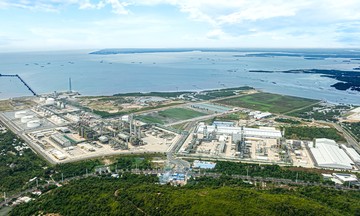The US Bureau of Economic Analysis (BEA), part of the Department of Commerce, recently announced that the US goods trade deficit with China reached $9.4 billion in June, the lowest since 2/2004.
Compared to May, the deficit decreased by $4.6 billion, approximately one-third. Following five consecutive months of decline, the trade deficit between the two economies has shrunk by $22.2 billion, a 70% reduction.
The US currently imposes a 30% tariff on most goods originating from China. This has led to a sharp decrease in imports from the country, down to $19.4 billion in June, the lowest since 2009. Meanwhile, US exports to the world's second-largest economy increased by $3.1 billion, reaching $10.1 billion.
The third round of trade talks between the two countries took place last week in Sweden. Negotiators recommended that President Donald Trump extend the current tariff rates until 8/12, avoiding a return to rates exceeding 100%, as happened earlier this year following a series of retaliatory measures. In an interview with CNBC on 8/5, Trump described the relationship with China as "very good" and stated, "We are very close to a deal".
 |
US and Chinese trade negotiators meeting in Geneva, Switzerland, on 5/11. Photo: Reuters |
US and Chinese trade negotiators meeting in Geneva, Switzerland, on 5/11. Photo: Reuters
The US deficit with Canada also reached a near five-year low in June, at $1.3 billion, amid stalled trade negotiations and US tariffs on Canadian cars, steel, and aluminum. Similarly, the deficit with Germany reached a five-year low of $3.8 billion.
Overall, the BEA reported that the US trade deficit in goods and services narrowed by 16%, from $71.7 billion in May to $60.2 billion in June. According to AFP, this figure exceeded analysts' expectations, largely due to a decline in goods imports, which totaled $265 billion in June, a decrease of $12.6 billion compared to May.
The shrinking trade deficit significantly contributed to the recovery of US GDP in Quarter II, with 3% growth after a 0.5% decline in Quarter I. During the first three months of the year, US imports surged as consumers and businesses stocked up on goods before tariffs took effect.
Since the beginning of the year, the US trade deficit has increased by $161.5 billion, or 38.3%, compared to the same period in 2024. Exports increased by $82.2 billion (5.2%), while imports rose by $243.7 billion (12.1%).
On 7/31, Trump announced new retaliatory tariffs on dozens of trading partners, ranging from 10% to 41%. Yale University estimates that when these tariffs take effect on 8/7, the average US import tariff will jump to 18.3%, the highest since 1934, compared to just 2-3% before Trump entered the White House in January.
According to economist Oren Klachkin of Nationwide Financial Markets, last week's tariff announcement reduced policy uncertainty, but the high tariffs still have adverse effects. "Businesses that had hoped tariffs were merely a threat now must adjust to the reality that they will be long-lasting," he said.
Phien An (Reuters, AFP)












